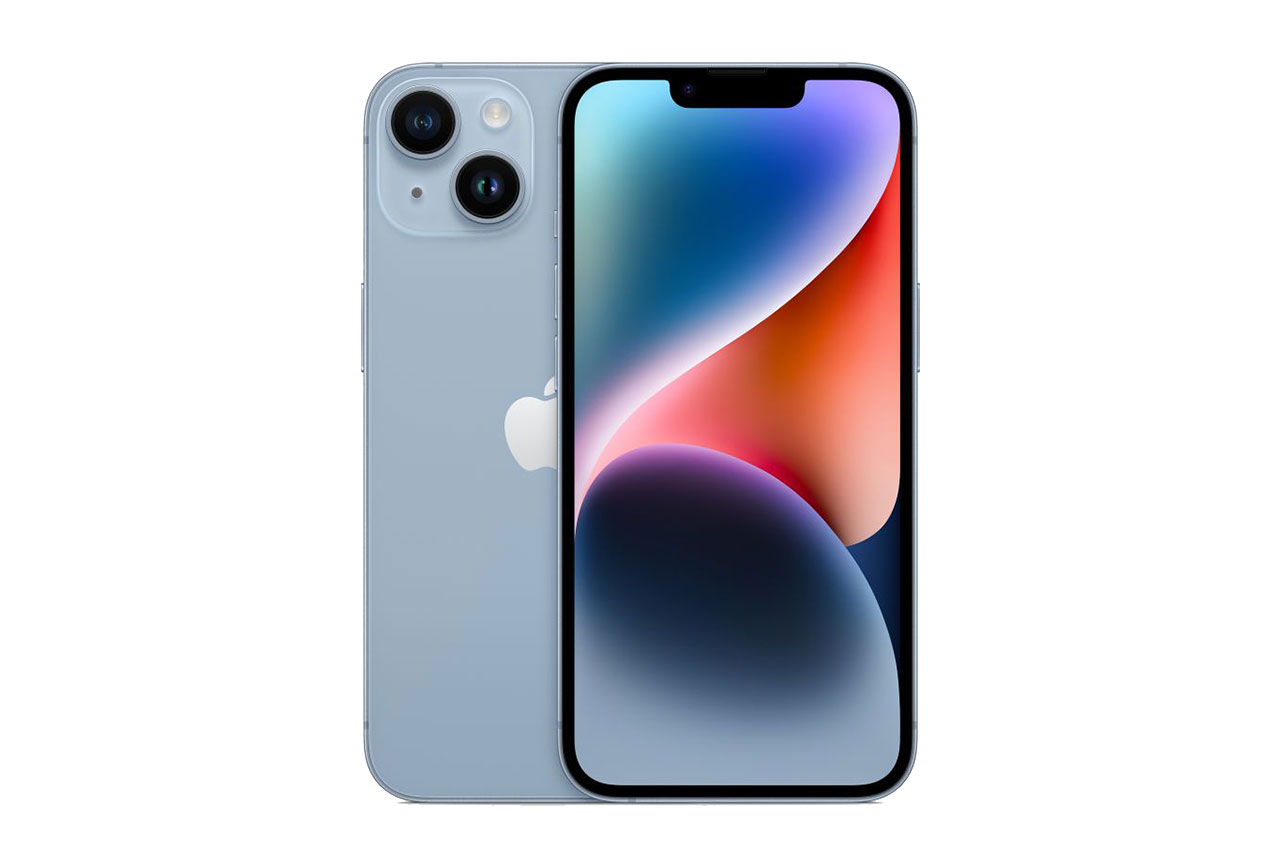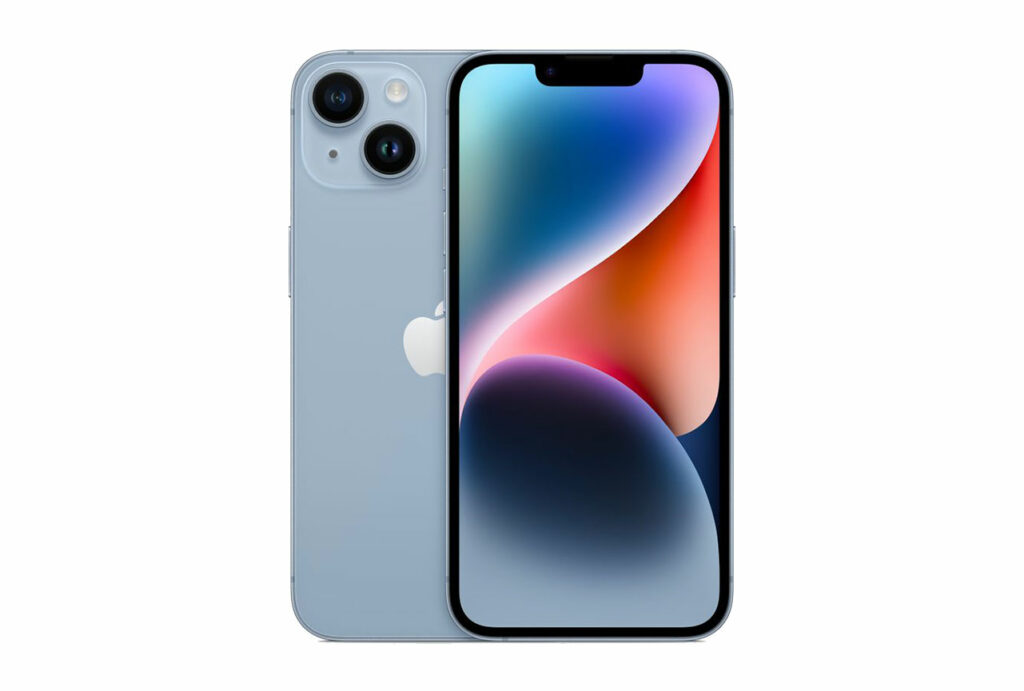We put the Apple iPhone 14 through our rigorous DXOMARK Audio test suite to measure its performance both at recording sound using its built-in microphones, and at playing audio back through its speakers.
Overview
Key audio specifications include:
- Two speakers, (One top front firing, one side bottom firing)
- No Jack audio output
- Dolby Atmos technology
- Spatial Audio playback
Scoring
Sub-scores and attributes included in the calculations of the global score.
 Apple iPhone 14
Apple iPhone 14

141
audio
141
Black Shark 5 Pro
Best: Black Shark 5 Pro (158)
138
Black Shark 5 Pro
Best: Black Shark 5 Pro (149)
148
Black Shark 5 Pro
Best: Black Shark 5 Pro (162)
144
Black Shark 5 Pro
Best: Black Shark 5 Pro (162)
91
Asus ROG Phone 5
Best: Asus ROG Phone 5 (157)
130
Honor Magic3 Pro+
Best: Honor Magic3 Pro+ (147)
124
Black Shark 5 Pro
Best: Black Shark 5 Pro (146)
107
Vivo X Fold
Best: Vivo X Fold (159)
126
Black Shark 5 Pro
Best: Black Shark 5 Pro (170)
137
Black Shark 5 Pro
Best: Black Shark 5 Pro (145)
146
Black Shark 5 Pro
Best: Black Shark 5 Pro (166)
Position in Global Ranking

18
th
5. Asus Smartphone for Snapdragon Insiders
149
13. Apple iPhone 15 Pro Max
143
14. Apple iPhone 14 Pro Max
142
23. Apple iPhone 12 Pro Max
140
28. Apple iPhone 13 Pro Max
139
28. Samsung Galaxy S24+ (Exynos)
139
28. Samsung Galaxy S24 Ultra
139
28. Samsung Galaxy S23 Ultra
139
34. Samsung Galaxy S23 FE
138
50. Samsung Galaxy Z Fold4
134
50. Samsung Galaxy S24 (Exynos)
134
54. Samsung Galaxy Z Fold5
133
54. Samsung Galaxy S22 Ultra (Snapdragon)
133
54. Samsung Galaxy S22 Ultra (Exynos)
133
54. Samsung Galaxy A54 5G
133
70. Samsung Galaxy Z Flip4
130
72. Samsung Galaxy Z Flip5
129
72. Vivo X80 Pro (Snapdragon)
129
76. Realme GT Neo 5 (240W)
128
76. Xiaomi Redmi K50 Gaming
128
84. Samsung Galaxy A52s 5G
127
84. Samsung Galaxy A52 5G
127
88. Motorola Razr 40 Ultra
126
88. Samsung Galaxy A53 5G
126
88. Samsung Galaxy A34 5G
126
95. Apple iPhone 11 Pro Max
125
95. Samsung Galaxy A33 5G
125
95. Vivo X80 Pro (MediaTek)
125
98. Lenovo Legion Phone 2 Pro
124
101. Apple iPhone SE (2022)
122
101. Apple iPhone SE (2020)
122
105. Samsung Galaxy S22+ (Exynos)
121
109. Samsung Galaxy Z Fold3 5G
120
109. Samsung Galaxy S22 (Snapdragon)
120
109. Samsung Galaxy S22 (Exynos)
120
112. Xiaomi Redmi K40 Gaming
119
119. Samsung Galaxy S21 Ultra 5G (Snapdragon)
118
119. Samsung Galaxy S21 Ultra 5G (Exynos)
118
119. Samsung Galaxy S21 FE 5G (Snapdragon)
118
119. Samsung Galaxy S21 5G (Snapdragon)
118
119. Samsung Galaxy S21 5G (Exynos)
118
130. Motorola Edge 40 Pro
116
130. Samsung Galaxy S20 Ultra 5G (Exynos)
116
130. Samsung Galaxy Note20 Ultra 5G (Exynos)
116
130. Xiaomi Redmi K40 Pro+
116
137. Motorola Edge 30 Pro
115
137. Samsung Galaxy Note20 Ultra 5G (Snapdragon)
115
141. Samsung Galaxy Z Fold2 5G
114
143. Samsung Galaxy Note 10+ 5G (Exynos)
113
143. Samsung Galaxy Note 10+ (Exynos)
113
151. Nubia RedMagic 6 Pro
112
158. Huawei Mate 30 Pro 5G
109
165. Oppo Reno6 Pro 5G (Snapdragon)
108
174. Lenovo Legion Phone Pro
105
174. Nubia RedMagic 7 Pro
105
174. Samsung Galaxy A23 5G
105
181. Nubia RedMagic 8 Pro
103
185. Motorola Edge 20 Pro
102
189. Honor Magic5 Lite 5G
97
189. Xiaomi Mi CC9 Pro Premium Edition
97
198. Vivo X70 Pro (MediaTek)
93
204. Vivo X60 Pro 5G (Snapdragon)
86
Position in Premium Ranking

5
th
13. Samsung Galaxy S24 (Exynos)
134
24. Lenovo Legion Phone 2 Pro
124
28. Samsung Galaxy S22 (Snapdragon)
120
28. Samsung Galaxy S22 (Exynos)
120
32. Samsung Galaxy S21 FE 5G (Snapdragon)
118
32. Samsung Galaxy S21 5G (Snapdragon)
118
32. Samsung Galaxy S21 5G (Exynos)
118
47. Oppo Reno6 Pro 5G (Snapdragon)
108
54. Xiaomi Mi CC9 Pro Premium Edition
97
56. Vivo X70 Pro (MediaTek)
93
58. Vivo X60 Pro 5G (Snapdragon)
86
Playback
Pros
- Good performance in all attributes, with great consistency across them
- Great timbre performance overall, enriched by a deep low-end extension
- Great dynamics performance overall
- Very good spatial performance
Cons
- Distortion and compression at maximum volume and when watching movies
- Stereo is still inverted in music app, as in all iPhones
Recording
Pros
- Good timbre performance overall
- Good performance when recording loud content such as concerts
- Good dynamics performance
- Good handling of artifacts overall. Wind noise reduction needs some fine-tuning but it works decently
Cons
- Midrange rendition is too dependent on the use case, and can sound either canny or nasal depending on the app and use case
- SNR could be greater, as main vocal content is often a bit masked by the ambient noise
- Poor audio zoom performance
The differences between the iPhone models when it comes to audio playback and recording have usually been minimal. The same holds true now with the release of the iPhone 14 series.
The iPhone 14, which contains the A15 Bionic chipset, shares many of the hardware specs as the 14 Pro Max, which operates on the latest A16 Bionic chip.
Our testers found that in Playback, the iPhone 14’s timbre has a richer midrange than the 14 Pro Max, but the 14’s high-end extension doesn’t reach that of the 14 Pro Max. Dynamics-wise, the other minor difference between the two models is that the iPhone 14’s sound is less impactful than the 14 Pro Max.
In Recording, the testers noticed very slight timbre variations between the models. The iPhone 14’s loudness was also slightly better than that of the 14 Pro Max.
Wind noise reduction on the iPhone 14 was slightly better managed than on the more advanced model.
The audio zoom isn’t a strong point on both models.
Given the similarities between the models and that the iPhone 14’s overall score came in just a point below the 14 Pro Max’s score, well within our margin of error, we direct you to the full test results of the iPhone 14 Pro Max for all the details of the iPhone 14’s audio performance.



 18th
18th 5th
5th


DXOMARK encourages its readers to share comments on the articles. To read or post comments, Disqus cookies are required. Change your Cookies Preferences and read more about our Comment Policy.